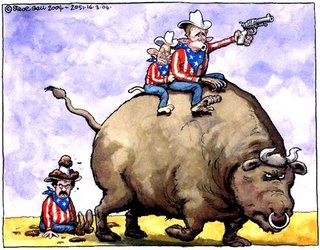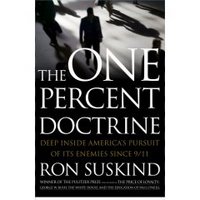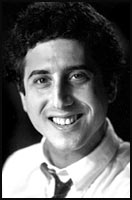


 Let me start by mentioning that so far I am only reading excerpts from “The One Percent Doctrine”, and they have been the source for this post and my two previous posts on the book. Hopefully my copy of Ron Suskind’s book will arrive from Amazon tomorrow. But in the interim, there have been some excellent excerpts to write on.
Let me start by mentioning that so far I am only reading excerpts from “The One Percent Doctrine”, and they have been the source for this post and my two previous posts on the book. Hopefully my copy of Ron Suskind’s book will arrive from Amazon tomorrow. But in the interim, there have been some excellent excerpts to write on.  According to Gellman, Suskind writes that the title is derived from a doctrine by VP Dick Cheney that was written in response to a report in 2001 that two Pakistani scientists who, in years gone by, had offered to build a bomb for Libya were then meeting with Osama bin Laden. Cheney’s doctrine dealt with “a low-probability, high impact event” such as the scientists building a bomb for Al Qaeda. The Cheney Doctrine states:
According to Gellman, Suskind writes that the title is derived from a doctrine by VP Dick Cheney that was written in response to a report in 2001 that two Pakistani scientists who, in years gone by, had offered to build a bomb for Libya were then meeting with Osama bin Laden. Cheney’s doctrine dealt with “a low-probability, high impact event” such as the scientists building a bomb for Al Qaeda. The Cheney Doctrine states:"If there's a one percent chance that Pakistani scientists are helping al Qaeda build or develop a nuclear weapon, we have to treat it as a certainty in terms of our response."
 Suskind states that the Cheney Doctrine allowed Bush to ignore debate about the government’s actions against Al Qaeda, basing the government’s war on terror on “impulse and improvisation” to unprecedented levels. From Suskind’s perspective, this course of action prevented counter-terrorism and intelligence agents from accomplishing their jobs and fighting terror.
Suskind states that the Cheney Doctrine allowed Bush to ignore debate about the government’s actions against Al Qaeda, basing the government’s war on terror on “impulse and improvisation” to unprecedented levels. From Suskind’s perspective, this course of action prevented counter-terrorism and intelligence agents from accomplishing their jobs and fighting terror.That approach constricted the mission of the intelligence and counterterrorism professionals whose point of view dominates this book. Many of them came to believe, Suskind reports, that "their jobs were not to help shape policy, but to affirm it." (Some of them nicknamed Cheney "Edgar," as in Edgar Bergen -- casting the president as the ventriloquist's dummy.) Suskind calls those career terror-fighters "the invisibles," and he likes them. His book is full of amazing, persuasively detailed vignettes about their world. At least a dozen former intelligence officials speak frankly in public here.
 The Gellman article sites numerous examples from “The One Percent Doctrine” where the views and discoveries of intelligence agents took a back seat to Bush’s policies, often with catastrophic results. Gellman focuses on the capture of Zubaydah, but perhaps more poigniant is the report of the meeting between Tenet and Bush at the Bush ranch on August 6, 2001.
The Gellman article sites numerous examples from “The One Percent Doctrine” where the views and discoveries of intelligence agents took a back seat to Bush’s policies, often with catastrophic results. Gellman focuses on the capture of Zubaydah, but perhaps more poigniant is the report of the meeting between Tenet and Bush at the Bush ranch on August 6, 2001.The book's opening anecdote tells of an unnamed CIA briefer who flew to Bush's Texas ranch during the scary summer of 2001, amid a flurry of reports of a pending al-Qaeda attack, to call the president's attention personally to the now-famous Aug. 6, 2001, memo titled "Bin Ladin Determined to Strike in US." Bush reportedly heard the briefer out and replied: "All right. You've covered your ass, now."
In interviews with intelligence officers, Suskind often finds them baffled by White House statements. "Why the hell did the President have to put us in a box like this?" one top CIA official asked about the overblown public portrait of Abu Zubaydah. But Suskind sees a deliberate management choice: Bush ensnared his director of central intelligence at the time, George J. Tenet, and many others in a new kind of war in which action and evidence were consciously divorced.
technorati tags: The One Percent Doctrine, Ron Suskind, Barton Gellman, George W. Bush, Bush Administration, Dick Cheney, Pakistani, Osama bin Laden, Al Qaeda, Cheney Doctrine, Abu Zubaydah, George Tenet, Ayman al-Zawahiri, Tora Bora, Khalid Sheik Mohammed, Terror
Posted by Scottage at 12:29 AM / | |
